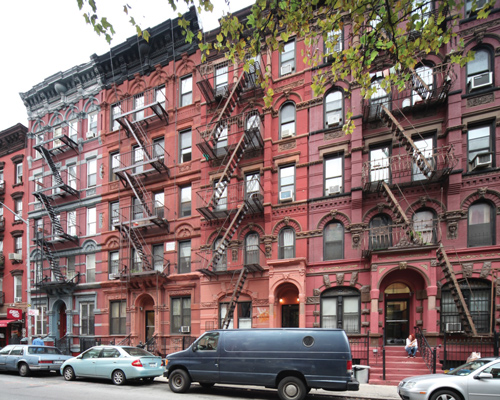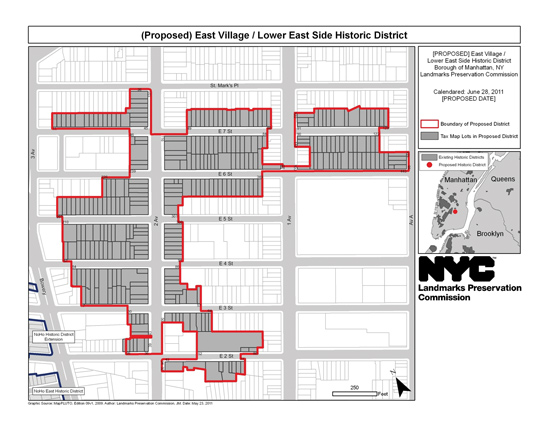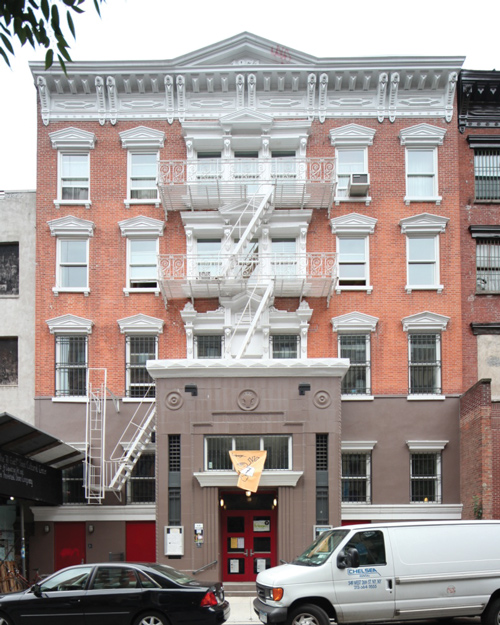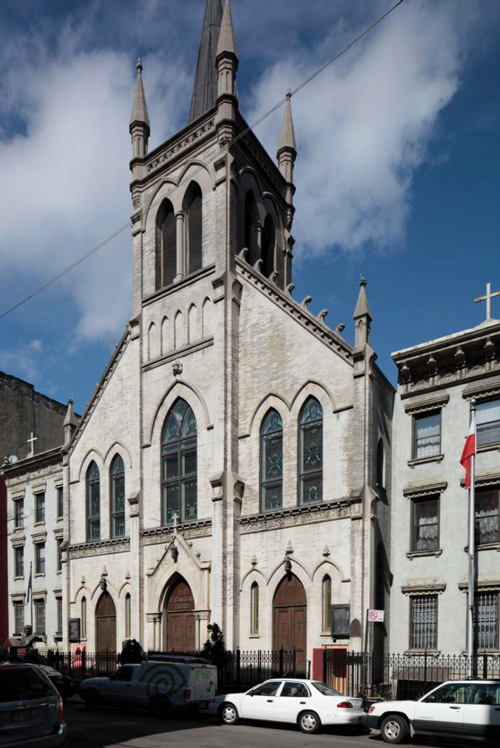

NEW YORK CITY LANDMARKS PRESERVATION COMMISSION
Robert B. Tierney, Chairman
EAST VILLAGE/LOWER EAST SIDE HISTORIC DISTRICT APPROVED
The East Village/Lower East Side Historic District encompassing 330 row houses, tenements, houses of worship, theaters and other Institutional buildings along and off Second Avenue between East 2nd and East 7th streets represents nearly 200 years of New York City History.


On October 9, 2012, the Landmarks Preservation Commission approved the designation of the East Village/Lower East Side Historic District capping a two year effort spear headed by the New York City Landmarks Preservation Commission (LPC) to
protect more than 330 architecturally and historically significant buildings that are synonymous with the American immigrant experience.
The district runs from East 2nd to East 7th streets along and off Second Avenue in an area that was once part of Peter Stuyvesant’s estate. Development started in the 1830s with the construction of elegant Greek Revival row houses for the city’s elite, and took off in the mid 19th century as handsome tenements, houses of worship and other institutions were erected for German immigrants who flocked to the neighborhood.
The area was later inhabited by many other immigrant groups including Eastern Europeans and Latinos. The district assumed a new identity in the mid 20th century drawing a vibrant mix of artists, musicians and community activists and has since been known as the East Village.
“Each wave of immigrants that settled in the district gave rise to the richly layered built environment that remains today,” said Commission Chairman Robert B. Tierney. “It’s an incredibly intact collection developed over the course of nearly 200 years of row houses, tenements, houses of worship, theaters that tell a complete story of one of New York City’s most renowned neighborhoods.”
Wealthy New Yorkers who had lived in Manhattan’s southern tip moved to the area in the 1830s and made it the city’s toniest residential district. With these new arrivals came numerous single family mansions and row houses such as those at 30 to 38 East 3rd Street. Completed in 1836, the buildings retain their original Flemish bond brickwork and Greek Revival style detailing.
One of the district’s most evocative blocks is East 4th Street between the Bowery and Second Avenue which was designated by the City as a cultural district because of the high concentration of theaters there. The south side includes Nos. 64 to 68 which comprised the centerpiece of a residential development known as Albion Place, a handsome terrace of 12 uniformly designed 31/2 story houses that were completed in 1833. Nos. 66 and 68 were combined and raised to four stories in 1871 as part of a conversion by the New York Turn Verein, a German gymnastics organization. In 1882, the Turn Verein hosted the first Yiddish language theatrical production ever staged in the United States. It has been an annex of the La Mama Experimental Theatre Club since the 1970s.

Turnverein Halle, East 4thStreet (1871)
Tenement construction and the conversion of single family homes into multiple family dwellings began in the 1850s as the wealthy left and large number of immigrants moved in, most of them German. These buildings, known as “pre-law” tenements because they predated the Tenement House Act of 1879, were designed in a simplified version of the Italianate style that had become the dominant mode of architecture in New York City. Examples can be found at 433 to 441 East 6th Street, an 1861 row of five uniform structures owned by the heirs of the John Jacob Astor fortune, and at 310 to 338 East 6th Street (at left), an 1864 row of 15 tenements owned by the heirs of Stephen Whitney.
Other immigrant groups began to settle in the neighborhood in the 1890s, many of them Yiddish speaking Jews from Eastern Europe. They transformed the area into a thriving entertainment district that was known as the Yiddish Rialto and included the Public Theater and Lowe’s Commodore movie palace at 66 and 105 Second Avenue, respectively. One of the most impressive reminders of this community is the Neo Classical style, c. 1910 Congregation Adas Yisroel Anshe Mezeritz synagogue at 415 East 6th Street, designed by German architect Herman Horenburger.
Immigrants from Poland and Hungary also left conspicuous marks on the neighborhood with buildings like the limestone, c. 1901 Saint Stanislaus, Bishop and Martyr Roman Catholic Church at 107 East 7th Street by architect Arthur Arctander, and the “naturestone” c. 1904, Gothic Revival style First Hungarian Reformed Church at 121 East 7th Street by architect Frederick Ebeling, now St. Mary’s American Orthodox Greek Catholic Church.

St. Stanislaus Church, East 7thStreet (1901)
Tenement construction continued in the last decades of the 19th century and into the beginning of the 20th century. The buildings were more flamboyant than their predecessors, as the Queen Anne, Romanesque Revival and Renaissance Revival styles came into fashion, and facades typically featured richly molded terra cotta detailing, textured brickwork, densely layered belt courses, projecting piers, and boldly massed cornices. Examples include the rows at 95 to 99 East 7th Street and 65 to 75 East 4th Street.
Intense construction ended in the early 1930s because of the Great Depression and most of the structures haven’t changed since then. But the demographics of the neighborhood changed dramatically in the 1950s when Latin American immigrants, mostly from Puerto Rico, and artists and bohemians priced out of Greenwich Village moved there.
The neighborhood survived plans for urban renewal in the 1950s and 1960s, as well as the economic downturn of the 1970s, to become the center of the 1980s downtown art and music scene.
The Fillmore East, run by the noted rock concert promoter Bill Graham, opened in the former Commodore Theatre at 105 Second Avenue in 1968, and later became the Saint, a private dance club. The former Yiddish Public Theatre at 66 Second Avenue served for a short time as CBGB’s Second Avenue Theater beginning in 1977, and hosted such bands and performers as the Talking Heads and Patti Smith. And a former meeting hall at 101 Avenue A has been the home of the Pyramid Club since 1979 providing a venue for drag performances, benefit concerts for AIDS victims and acts like the Red Hot Chili Peppers and Nirvana.
The Landmarks Preservation Commission is the mayoral agency responsible for protecting and preserving New York City’s architecturally, historically and culturally significant buildings and sites. Since its creation in 1965, LPC has granted landmark status to more than 30,000 buildings and sites including 1,318 individual landmarks, 114 interior landmarks, 10 scenic landmarks, 109 historic districts and 18 historic district extensions in all five boroughs. Under the City’s landmarks law considered among the most powerful in the nation, the Commission must be comprised of at least three architects, a historian, a realtor, a planner or landscape architect, as well as a representative of each borough.